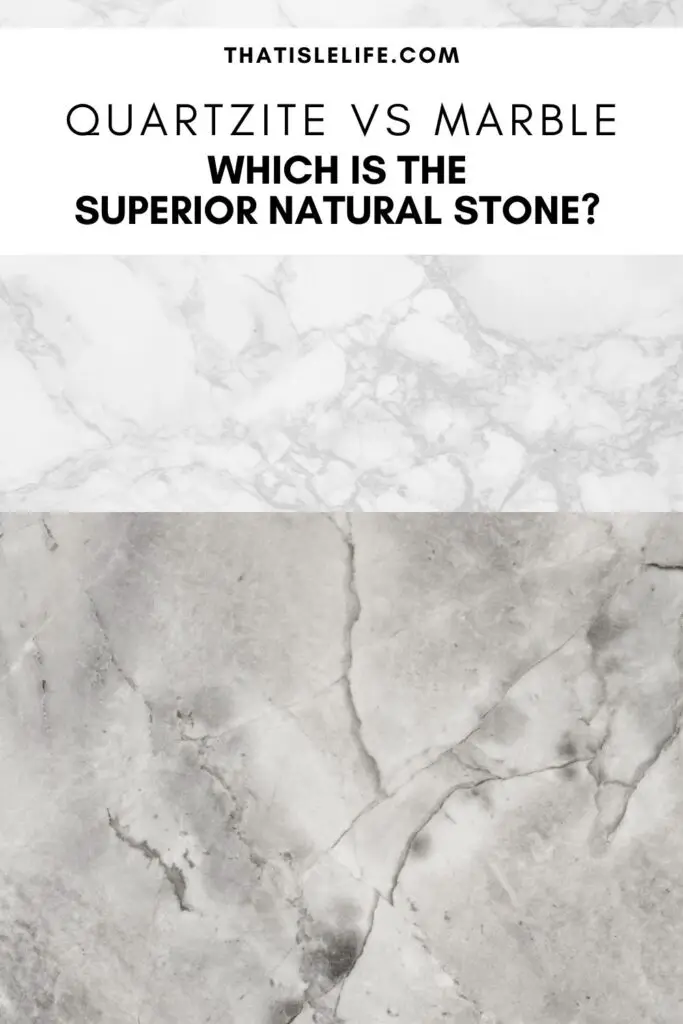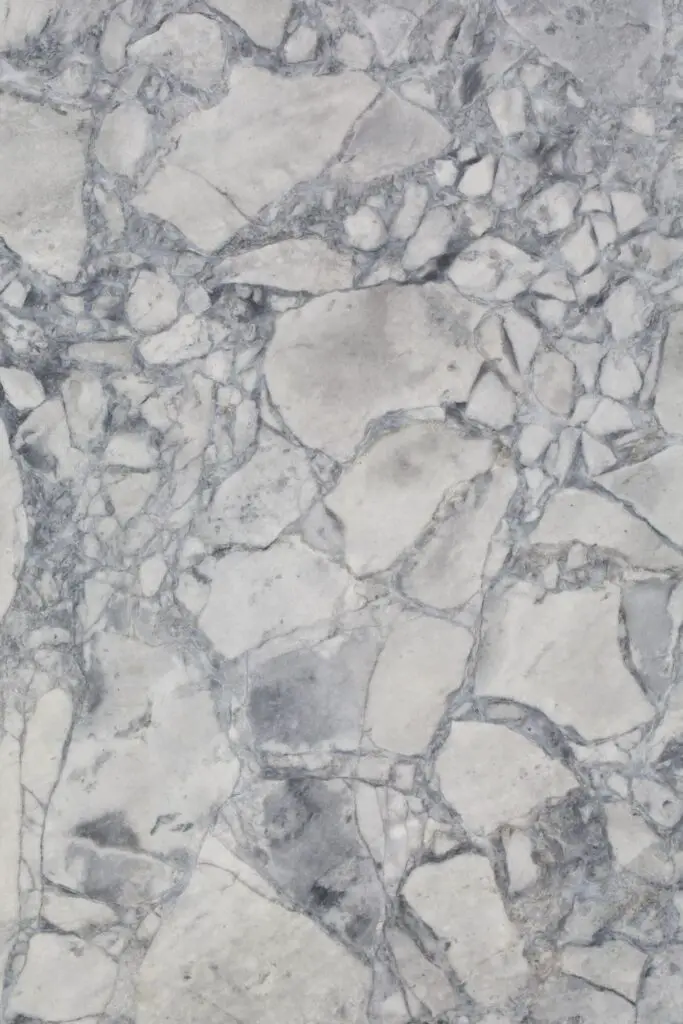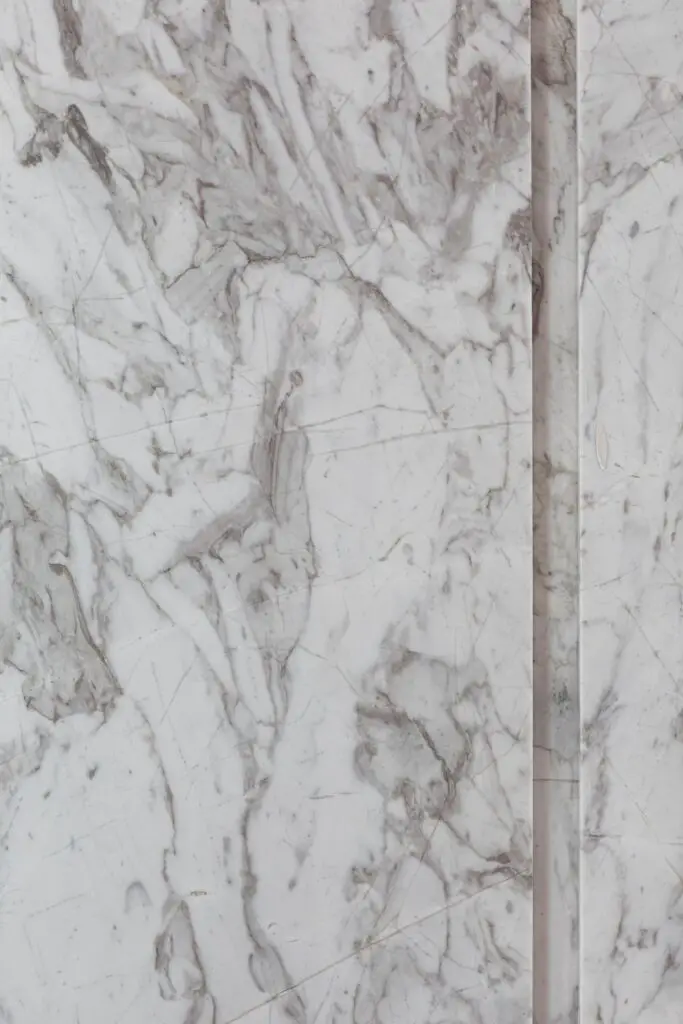Are you confused between quartzite and marble? Both are beautiful natural stones that look alike. But, which natural stone is better? Keep reading to find out the pros and cons of quartzite vs marble.
It’s common to mistake quartzite for marble. After all, both stones look alike and are 100% natural. Some stone quarries may even mislabel them!
But, just because they look alike doesn’t mean they share the same characteristics!
While both stones have their advantages, it is important to know the specific traits of each stone. This helps future homeowners like YOU to identify the correct stone, which in turn helps you to care for and maintain these stones properly!
In this post, I will share everything you need to know about quartzite vs marble – what it is, its composition, its uses, and the pros and cons of each stone.
Read on to discover which natural stone is better for your home.

Related to Quartzite vs Marble:
- Quartzite vs Granite: Which Natural Stone Is Better For Your Kitchen?
- Quartz vs Marble – Which is the better option for my kitchen?
- Travertine vs Marble – What’s the difference and which is the better option for my home?
Table of Contents
What is quartzite?

What it is: According to Geology.com, quartzite is a metamorphic rock made almost entirely out of quartz.
How it’s made: Quartzite is formed when sandstone is altered by Earth’s heat and pressure in addition to the chemical activity of metamorphism.
Texture and finish: Slightly coarser feel, but can come in different finishes like polished, honed, and leathered
Color: Primarily whites and greys
Pattern: Similar to marble as both stones have feathered strokes or swirling veins across the surface
Uses: Kitchen countertops, decorative walls, roofing tiles, stairs, and flooring
Cleaning Instructions: Clean daily with a soft sponge or cloth, gentle soap, and water. Use a non-abrasive stone cleaner designed specifically for natural stones for intensive cleaning.
Maintenance: As with all natural stones, quartzite requires regular sealing to maintain its quality. Always use coasters, trivets, and cutting boards to prevent stains and scratches. Wipe all spills immediately with a soft cloth.
Pros of quartzite
Looks like marble
Quartzite has a similar appearance to marble. Both have free-flowing veins across the surface, which makes both stones look beautiful, unique, and luxurious. In addition, both stones’ colors and textures look alike.
More durable than marble
In terms of hardness, quartzite is a 7 on the Mohs Hardness Scale whereas marble is a 3 on the same scale. As a result, quartzite is much more durable than marble, making it less susceptible to scratches, chips, and cracks.
Doesn’t etch
Etching is a chemical process that occurs when acidic elements come into contact with the stone—for instance, lemon, salad dressing, wine, ketchup, etc. Etching essentially removes a stone’s shine and forms a dull rough spot on the surface.
One of the main differences between quartzite vs marble is that quartzite doesn’t etch. Quartzite’s main composition is quartz, which does not react to acid. On the other hand, marble consists primarily of calcite which reacts to acid. Hence, it is prone to etching when exposed to acidic ingredients or materials.
Heat-resistant
Since quartzite is formed under high heat and pressure, it can withstand high temperatures. This means it will not burn if you place a hot pan or pot directly on the surface.
Increases house resale value
As with all natural stones, having quartzite in your home increases its resale value. Not only does quartzite look beautiful, but its durability makes it a fantastic choice for high-traffic areas like the kitchen. Its longevity and quality make quartzite a highly-sought after stone.
Cons of quartzite
Requires regular maintenance
Not all quartzite is the same, as some are more porous than others. While quartzite is generally more durable than marble, it still requires regular maintenance. Therefore, it is advisable to seal your quartzite once every few years to prevent stains.
Can be more expensive than marble
The price of quartzite ranges from $60 – $100 per square foot and it depends on several factors such as location and design. However, quartzite can cost more than marble, if you include the cost of installation. Quartzite is harder, which makes it more difficult and expensive to install.
What is marble?

What it is: Marble is a metamorphic rock composed primarily of calcite and other minerals like clay minerals, micas, quartz, pyrite, and more.
How it’s made: First, limestone is subjected to the heat and pressure of metamorphism. Then, the calcite in the limestone enters a recrystallization process forming marble.
Texture and finish: Smooth with three common types of finishes – honed, leathered, and polished.
Color: There are many different colors including white, black, green, red/orange, yellow/gold, and brown.
Pattern: Streaks of free-flowing veins running across its surface
Uses: Kitchen countertops, islands, and backsplashes, bathroom countertops, walls, flooring, furniture, and decorative items
Cleaning instructions: Clean daily with a soft cloth, water, and mild water. Remember to wipe dry immediately. Do not use harsh, abrasive, or acidic cleaners, which include lemon juice or vinegar.
Maintenance: As with all natural stones, marble requires regular sealing to maintain its quality. Always use coasters, trivets, and cutting boards to prevent stains, etch marks, and scratches. Wipe all spills immediately with a soft cloth.
Pros of Marble
Beautiful, luxurious, and unique
Ask anyone what the most beautiful natural stone is, and I’m sure they will say it’s marble! Marble can blend in with a lot of interior styles, making it a popular choice for homeowners. Marble is also available in many colors, patterns, and finishes – no one slab is alike!
Easy to install
Being a softer stone, marble is easier to install than quartzite. As quartzite is a much harder stone than marble, installation may require specialized tools which may cause the process to be more tedious.
High resale value
Like quartzite, having marble in your home will increase its resale value. Due to its long history, beauty, and durability, marble remains one of the most popular natural stones to date. Installing marble for your flooring, kitchen countertops, bathrooms, and centerpieces can increase your property’s value.
Cons of Marble
Porous
Marble is porous, so it has tiny holes or pores on its surface. When a surface is porous, it is extremely hard to clean any liquid passing through the surface. That’s why stains occur when liquids are left lying on a marble surface for a long time.
Not as durable
Marble is one of the softer natural stones, which makes it more fragile compared to quartzite. Despite being heat-resistant, it is susceptible to scratches, etch marks, and, stains.
Requires regular maintenance
Since marble is less durable and more porous than quartzite, regular maintenance is a must. In fact, marble may even require more frequent sealing than quartzite does. Plus, you’re likely to spend more time cleaning a marble countertop over a quartzite one!
Can be expensive
Marble comes in a wide array of colors, patterns, and textures. If you like a bold and dramatic stone, Calacatta marble is your best bet. However, it is the most expensive marble in the world because it is only available from one quarry in the world. For that reason, production is extremely limited.
Quartzite vs Marble – which is the superior natural stone?
If you’ve made it to the end of this post, you’ll know that both stones have their pros and cons. They’re great but not perfect.
However, if I had to pick one for my home, I’ll probably go for quartzite. It’s the durability for me. I don’t have to worry about etching or staining the stone!
I know the imperfections add to a stone’s uniqueness, but I can’t bear to see the flaws, especially if the stone is expensive.
Ultimately, you’ll never go wrong with either quartzite or marble. Think about how you’ll be using the stone and how each con affects you.
Now that you know the key differences between both stones, you’ll be able to choose the best stone for your home.
Still not sure which natural or engineered stone to get? Check out these blog posts below:
- Dolomite vs Granite: Which Is Better For Kitchen Countertops?
- Sintered stone vs Quartz – Which Slab Is Better For Your Home?
- Quartzite vs Granite: Which Natural Stone Is Better For Your Kitchen?
- Quartz vs Marble – Which is the better option for my kitchen?
- Travertine vs Marble – What’s the difference and which is the better option for my home?
- Terrazzo vs Marble – Which is the better option for your home?

